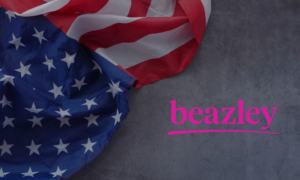EIS (San Francisco) emerged on the scene in 2008 as a relative late-comer to what one might call the package core insurance system movement, which has since evolved into the core insurance platform movement.
However, Alec Miloslavsky, CEO of the company, says that whereas other companies may have started with one core component or other, “We started out by building a platform from the get-go.” Acknowledging that this ambitious approach may not have been the quickest path to market success, it has resulted in advantages that are paying off.
One of four founders, along with Fazi Zand, Rowshi Pejooh and Mike Dwyer, Miloslavsky was named EIS’s CEO in 2011. In 2013, the company began its transition from being exclusively a property/casualty industry provider to entering the life and annuities market. The company had both its first non-P&C customer and its first cloud customer in 2015. “That’s when we started on the growth path that we’re on today,” Miloslavsky comments. “We have grown 30 percent annually, more or less, since then.” Though EIS continued to deploy in the cloud in the intervening years, in 2020 it formalized its SaaS delivery option.
Insurance Innovation Reporter: Tell us a little about the importance of platform and how EIS differentiates itself in the market in that regard.
Alec Miloslavsky, CEO, EIS: Of course having a platform today is not differentiating, but our goal and the DNA of the company was always to be a platform. The main benefits ultimately are time-to-market and speed in all its forms—to develop, deploy, integrate, bring products to market, and to design within and outside of the platform. And of course these qualities have tremendous bearing on total cost of ownership. In software deployment, the main predictor of cost of both an implementation program and total cost of ownership is the ability to make things work quickly without lots of custom development and without using weird and proprietary technologies. Of course competitiveness in the insurance business increasingly depends on the speed with which you can react—especially if you operate in more competitive market segments.
A well-designed platform therefore comes with APIs, backward and forward compatibility, and the ability to deploy and upgrade quickly. It abstracts the developer from the internals of the system and allows that developer to focus on important business considerations—such as user experience and product configuration—without extensive coding.
IIR: How do you see the concept of core insurance systems changing in the platform era?
AM: From an insurance infrastructure perspective, carriers are beginning to see that the core system is not an admin system. While many insurance executives may continue to refer to the backend system as an admin system, it’s not; it’s a manufacturing and customer engagement system. Insurers are beginning to understand that the core system is the center of an ecosystem, because carriers cannot operate as hermetically sealed businesses—they must have a way of absorbing external partners and technologies. They are also beginning to understand that the core must be easy to upgrade, because the pace of innovation is accelerating. Among the most important qualities needed today are the ability to quickly manufacture a product, combine it with others, put it into any distribution model, and also customize it for personalized user experiences.
Another important quality for core systems is the ability to combine multiple lines of businesses into a single offering to the client base. Insurers have historically underutilized access to the customer through thinking about their business as books of business and pools of risk rather than from the perspective of customer need. In order to compete with new entrants and hyperefficient monoline carriers, they need to change their perspective. I think of this as the Amazon business model: “I’ll sell you whatever you want, as long as I have a relationship with you. I’ll even sell someone else’s product until I figure out how to make myself, but I recognize that my most important asset is my relationship with you.”
IIR: What are some of the most important changes happening in insurance technology beyond core technology itself?
AM: I think that the most critical thing happening is the adoption of agile methodology across the enterprise, underpinned by technology platforms—disciplines such as DevOps—but most importantly by carriers’ recognition of the requirement to move quickly, make decisions quickly, and get a predictable result out of their IT investments. That is reasonable not just by standards of the insurance industry—which is notorious for a high failure rate in reaching a desired result—but by general standards of enterprise software
So, there’s a cultural shift overall, but it’s enabled by adoption of new approaches and technologies. Insurers are under increasing competitive pressure to be able to implement quicker to a customer who expects the same kind of interaction with their insurance company as they do from other businesses.
IIR: And, broadly speaking, what are the characteristics of that interaction?
AM: It comes down to the ability to support very high-quality interactions online in an intuitive manner. That implies not just a superb user experience and the technology that underpins such an interaction, but also ability to integrate with multiplicity of third-party technologies—for example, payments, AI for image processing of damage, geolocation—the ability to integrate those things easily and quickly in controlled manner to your ecosystem.
IIR: If you had to criticize the current insurance user experience, what would you say is missing from it?
AM: Sadly, it might be harder to say what’s present than what’s missing, in terms of a modern customer experience. Insurers’ technology environments continue to be characterized by disparate internal systems, limited access to systems internally, multiple integrations and handoffs. It’s very difficult to integrate these parts into a coherent user experience, especially as these multiple systems are changing. It puts your technology budget into continuous integration and reintegration hell as opposed to dedicating resources to value-added investments that enhance the user experience.
IIR: You implied something that perhaps gets less attention than it deserves: the quality of the internal user experience.
AM: The quality of the internal user experience is vital to the process efficiency, and ultimately to the external customer experience. As I implied, today there is poor internal user experience because of disparate systems, which imply manual handoffs, generating errors and frustration. The best customer-facing businesses don’t make much distinction between user experience internally and externally. Ideally, everything that your internal personnel are able to do, you should be able to do online. Internal processes should be characterized by the same level of process excellence that you’re showing to the rest of the world.
IIR: What needs to happen to increase the overall level of user experience in insurance?
AM: Whatever business segment you’re in, insurers need to adopt the current technology and IT practices that leading customer-facing companies use. The closer to Amazon or Netflix you are, the better. That implies a certain approach to technology, but also methodology and decision making in the organization.
IIR: In this regard, what are the advantages of having a single core platform across multiple lines of business?
AM: While there are vast differences between different lines of business, from a technical perspective there are more things that are similar. As a developer, the ability to reuse from one line of business to another is a big advantage if you have a platform. If you didn’t start out with a platform vision, as we did, it’s difficult to cross lines of business. A single platform comes with other advantages, for example the ability to adopt advances from one industry to another, for example from P&C to life. A single platform increases the ability to utilize the overall customer relationship and cross sell products across lines of business. From a scale perspective, having a single platform that can be used in multiple parts of the enterprise is a significant advantage.
IIR: The industry is very focused on “digital” in the sene of customer-facing capabilities. What about the emerging uses of data that go well beyond customer-experience, and how modern core platforms should be able to accommodate the emerging potential of data?
AM: This is a huge area that’s virtually untouched. The ability to more easily consume, circulate and analyzing data is another advantage of a single platform for core operating functions and data. Historically they have been two different sets of systems and people internally. To achieve the Amazon model, you have to be able to utilize your data well when you need it, at time of interaction with customer or consumer of data—could be a supplier, third party.
You have to timely access algorithms AI algorithms that consume this data to be able to operate at the time of the interaction, not two months later from some other department of data sciences, when the utility of that data is already aged. Insurance companies interact with their customers notoriously seldom and each interaction is very valuable because of that scarcity. So being able to make decisions and raise the value of interactions through using the data at the point therefore makes a lot of sense.
Source: Insurance Innovation Reporter
Share this article:








